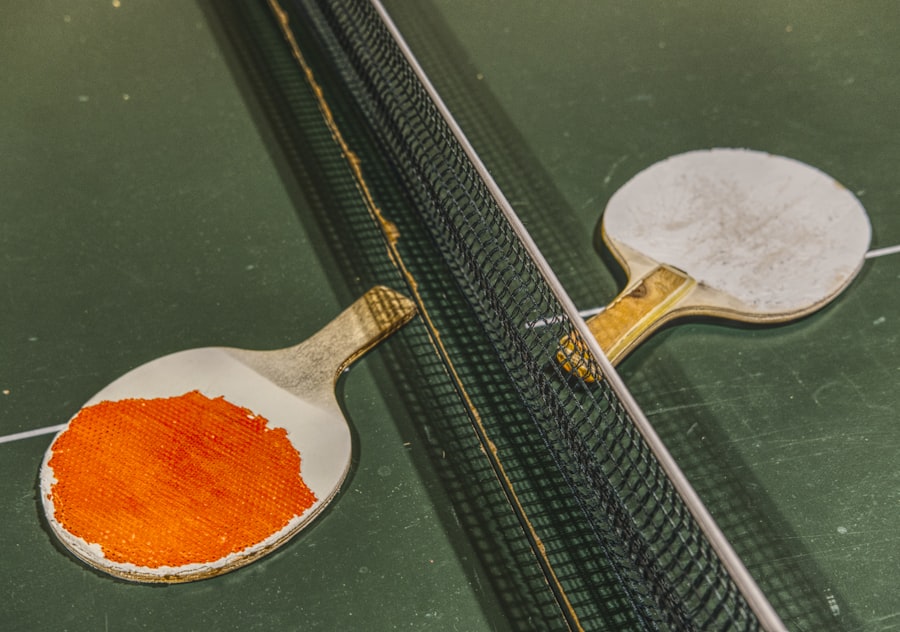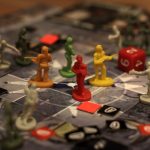Download links
How to install Mastering the Art of Table Tennis APK?
1. Tap the downloaded Mastering the Art of Table Tennis APK file.
2. Touch install.
3. Follow the steps on the screen.
Description
Table tennis, often referred to as ping pong, is a fast-paced sport that combines agility, precision, and strategy. Originating in England during the late 19th century as a parlor game, it has evolved into a competitive sport played worldwide. The game is played on a rectangular table divided by a net, with players using small paddles to hit a lightweight ball back and forth.
The objective is to score points by making the ball land on the opponent’s side of the table in such a way that they cannot return it. Understanding the basic rules and scoring system is essential for anyone looking to engage in this dynamic sport. The game can be played in singles or doubles formats, with each player or team aiming to reach 11 points first, although matches can be played to 21 points in some contexts.
Players must serve the ball diagonally across the table, and the serve must first bounce on the server’s side before crossing the net. A rally continues until one player fails to return the ball correctly. The sport emphasizes quick reflexes and strategic thinking, as players must anticipate their opponent’s moves while executing their own shots with precision.
Familiarity with these foundational elements sets the stage for deeper exploration into techniques and strategies that can enhance performance.
Key Takeaways
- Table tennis is a fast-paced game that requires quick reflexes and precise hand-eye coordination.
- The correct grip and stance are essential for maintaining control and power in your shots.
- Mastering serve and return techniques is crucial for gaining an advantage over your opponent.
- Developing strong forehand and backhand shots will give you the ability to attack and defend effectively.
- Improving footwork and movement on the table is key to reaching the ball and maintaining a strong position during rallies.
Perfecting Your Grip and Stance
Grip Options
There are primarily two types of grips: the shakehand grip and the penhold grip. The shakehand grip resembles a handshake and is widely used due to its versatility, allowing players to execute both forehand and backhand shots effectively. In contrast, the penhold grip, which involves holding the paddle like a pen, offers greater control for certain styles of play, particularly in Asian countries.
Choosing the Right Grip
Each grip has its advantages and disadvantages, and players should experiment to find which one feels most comfortable and effective for their style.
Stance and Posture
A balanced stance typically involves feet shoulder-width apart, knees slightly bent, and weight distributed evenly on both feet. This position allows for quick lateral movements and provides stability when executing shots. Players should also keep their paddles up and ready, maintaining an athletic posture that enables them to react swiftly to their opponent’s shots. Practicing these elements consistently can lead to improved shot accuracy and overall performance on the table.
Developing Your Serve and Return Techniques

Serving is one of the most critical aspects of table tennis, as it sets the tone for each rally. A well-executed serve can put pressure on an opponent right from the start. There are various types of serves, including topspin, backspin, sidespin, and no-spin serves.
Each type can be used strategically to disrupt an opponent’s rhythm or exploit their weaknesses. For instance, a topspin serve can be effective against players who struggle with high-bouncing balls, while a backspin serve can cause confusion for those who are not adept at handling low balls. Equally important is mastering return techniques. A successful return requires anticipation and quick decision-making based on the type of serve received.
Players should focus on reading their opponent’s body language and paddle angle to predict the spin and placement of the ball. Practicing different return techniques—such as counter-hitting, pushing, or looping—can enhance a player’s ability to respond effectively to various serves. By developing both serving and returning skills, players can gain a significant advantage in matches.
Mastering the Forehand and Backhand Shots
| Player | Forehand Shots | Backhand Shots |
|---|---|---|
| Player 1 | 85% | 75% |
| Player 2 | 90% | 80% |
| Player 3 | 80% | 70% |
The forehand and backhand shots are the cornerstones of effective table tennis play. Mastery of these strokes allows players to control rallies and dictate the pace of the game. The forehand shot is typically executed with a sweeping motion from the side of the body, utilizing the body’s rotation for power and spin.
Players should focus on generating topspin by brushing up on the ball during contact, which not only increases speed but also makes it more challenging for opponents to return. On the other hand, the backhand shot is often perceived as more challenging due to its positioning and mechanics. It requires precise timing and body alignment to execute effectively.
Players can choose between a two-handed backhand for added control or a one-handed backhand for speed and agility. Practicing both types of backhands can provide versatility in gameplay, allowing players to adapt their shots based on their opponent’s positioning and style. Consistent practice of these fundamental strokes is essential for developing a well-rounded game.
Improving Your Footwork and Movement on the Table
Footwork is an often-overlooked aspect of table tennis that plays a crucial role in a player’s overall effectiveness. Good footwork allows players to position themselves optimally for each shot, ensuring they can generate power while maintaining balance. Players should focus on lateral movements, quick pivots, and efficient positioning to cover all areas of the table effectively.
Drills that emphasize agility—such as ladder drills or cone exercises—can significantly enhance foot speed and coordination. Moreover, understanding how to move in relation to the ball is vital for success in table tennis. Players should practice anticipating where the ball will land based on their opponent’s shot trajectory and spin.
This anticipation allows them to make quicker decisions about foot placement and shot execution. Incorporating footwork drills into regular practice sessions can lead to improved movement patterns during matches, enabling players to respond more effectively to their opponent’s shots.
Strategies for Playing Singles and Doubles Matches

The strategies employed in singles matches differ significantly from those used in doubles play. In singles, players often focus on exploiting their opponent’s weaknesses through targeted shots and strategic placement. This may involve varying spin, speed, and angles to keep opponents guessing.
Players should also be aware of their own positioning on the table; maintaining a central position allows for quicker responses to shots directed at either side. In doubles matches, teamwork becomes paramount.
Players should develop an understanding of each other’s playing styles and preferences to create effective combinations of shots. Additionally, positioning is crucial; players should aim to cover their respective sides while also being prepared to switch roles as needed during rallies. Practicing specific doubles drills can help teams develop synergy and improve their overall performance in competitive settings.
Mental Preparation and Focus during Competitions
Mental preparation is often as important as physical training in table tennis competitions. The ability to maintain focus under pressure can significantly impact performance levels during matches. Players should develop routines that help them enter a focused state before competing; this may include visualization techniques where they imagine successful plays or calming exercises such as deep breathing to reduce anxiety.
During matches, maintaining composure is crucial when faced with challenging situations or unexpected setbacks. Players should practice staying present in each point rather than dwelling on past mistakes or worrying about future outcomes. Developing a positive mindset can enhance resilience; players who view challenges as opportunities for growth are more likely to perform well under pressure.
Engaging in mental training exercises regularly can help cultivate this mindset over time.
Tips for Practicing and Training Effectively
Effective practice is essential for improvement in table tennis, yet many players overlook key aspects that can enhance their training sessions. One fundamental tip is to set specific goals for each practice session—whether it’s improving serve accuracy or refining footwork techniques—this focus can lead to more productive training outcomes. Additionally, incorporating variety into practice routines can prevent monotony; alternating between drills that emphasize different skills keeps training engaging while promoting overall development.
Another important aspect of effective training is seeking feedback from coaches or experienced players. Constructive criticism can provide valuable insights into areas needing improvement that may not be apparent during self-assessment. Recording practice sessions can also be beneficial; reviewing footage allows players to analyze their techniques critically and identify patterns that require adjustment.
By combining structured goals with diverse training methods and feedback mechanisms, players can maximize their practice effectiveness and accelerate their development in table tennis.
FAQs
What is table tennis?
Table tennis, also known as ping-pong, is a sport in which two or four players hit a lightweight ball back and forth across a table using small bats.
What are the basic rules of table tennis?
The basic rules of table tennis include serving the ball diagonally over the net, allowing the ball to bounce once on each side of the table, and scoring points when the opponent fails to return the ball.
What equipment is needed to play table tennis?
To play table tennis, you need a table tennis table, table tennis bats (also known as paddles or rackets), table tennis balls, and a net.
What are the health benefits of playing table tennis?
Playing table tennis can improve hand-eye coordination, reflexes, and balance. It also provides a good cardiovascular workout and can help to improve mental acuity and concentration.
What are the different types of table tennis shots?
The different types of table tennis shots include the forehand drive, backhand drive, topspin, backspin, smash, and lob.
What is the history of table tennis?
Table tennis originated in England in the late 19th century as a parlor game, and it has since become a popular sport worldwide. The sport is governed by the International Table Tennis Federation (ITTF).





